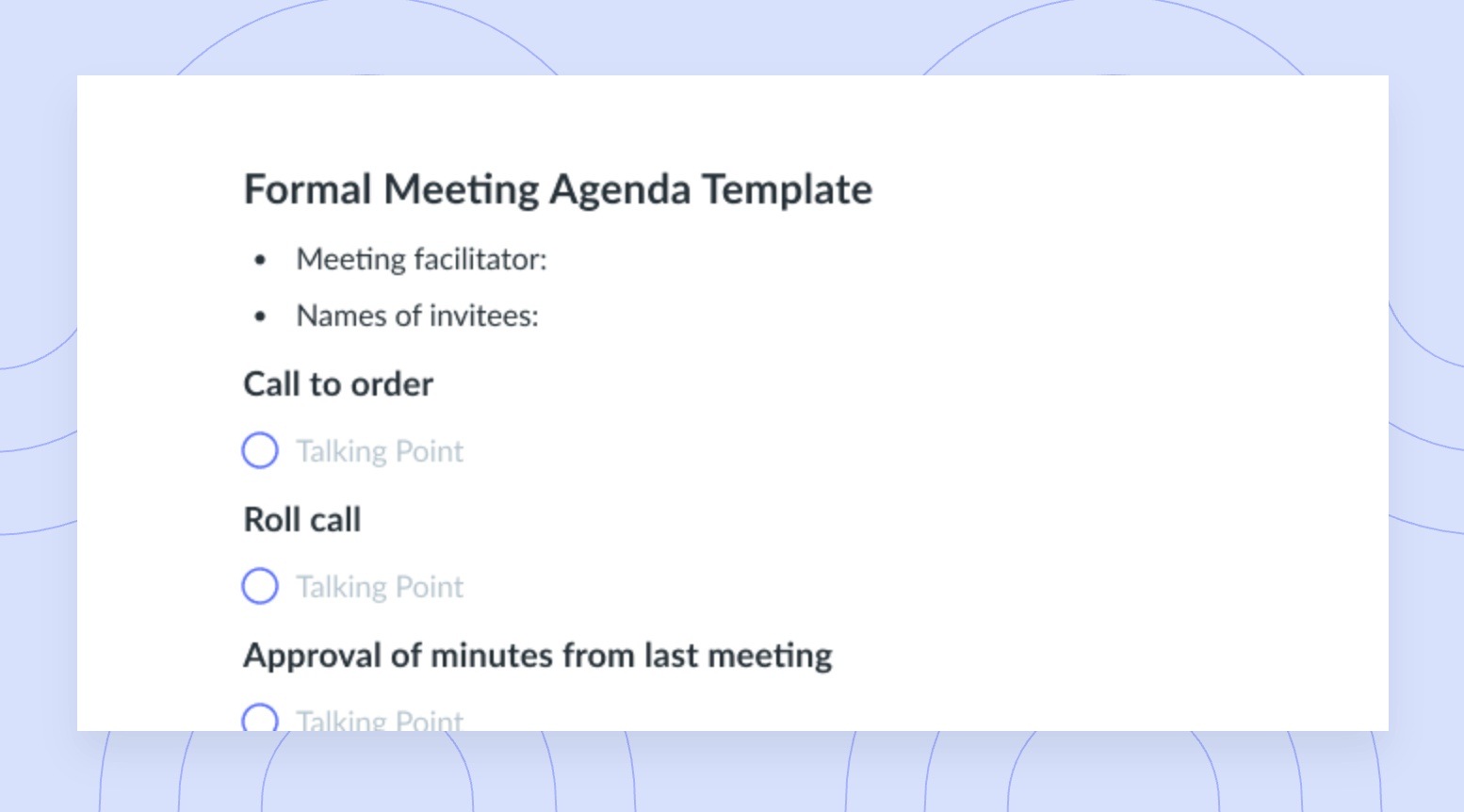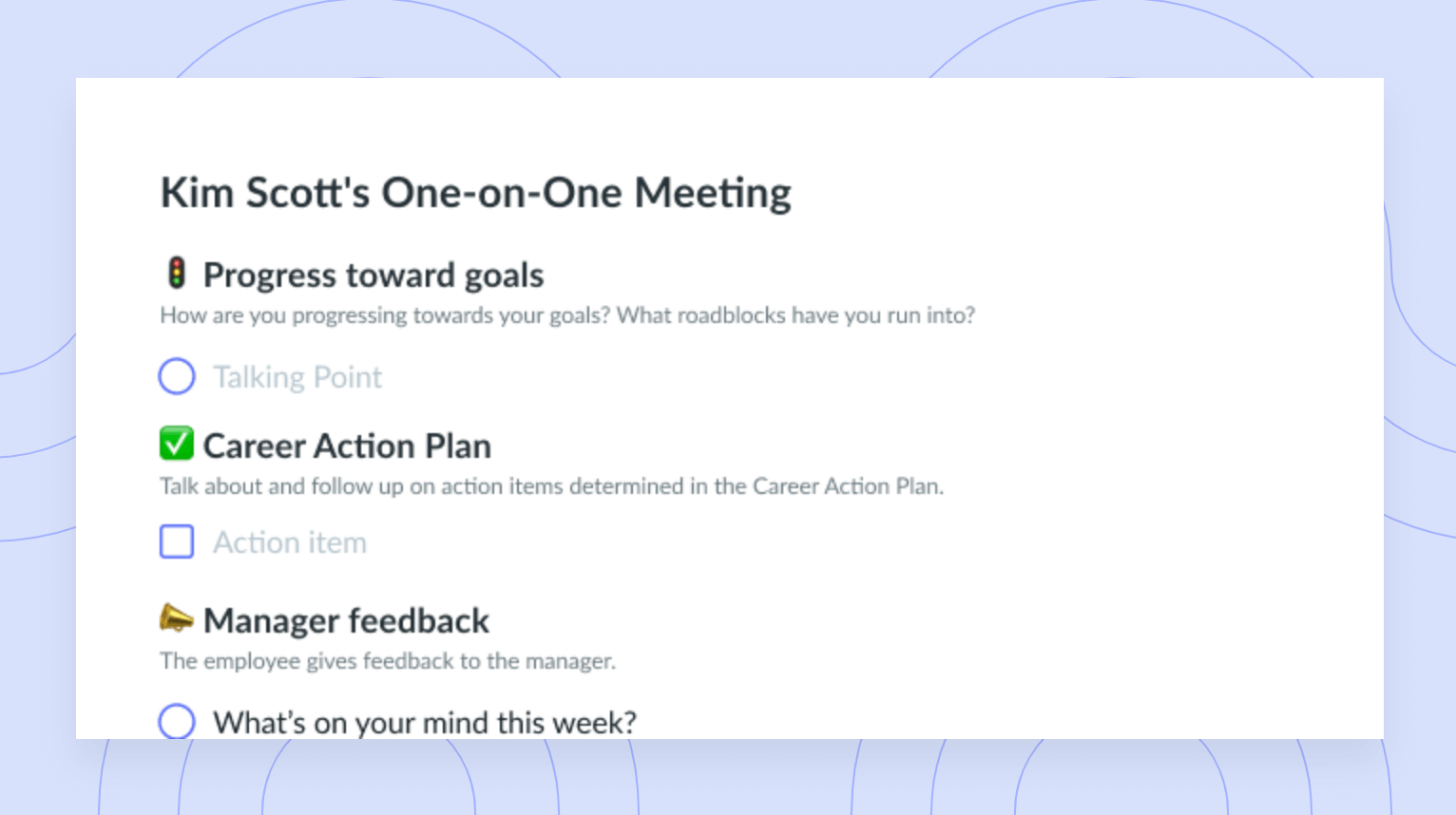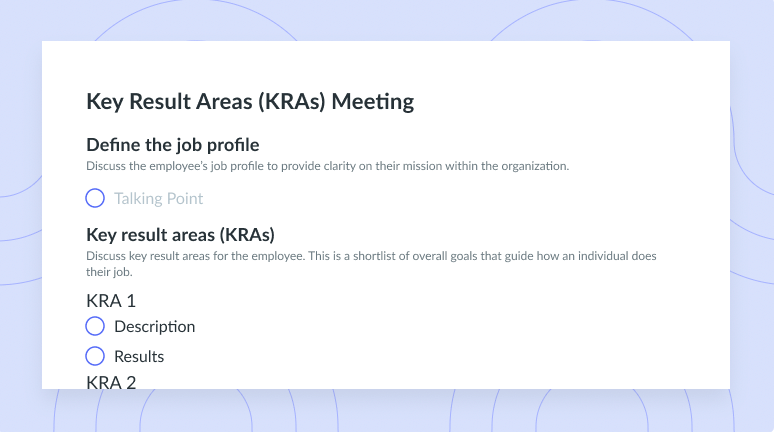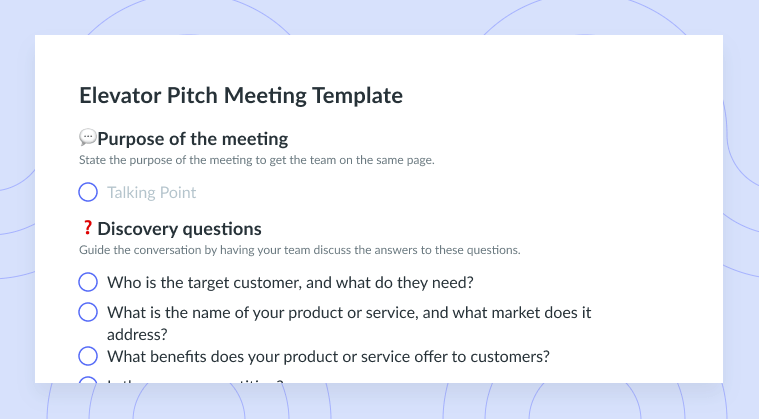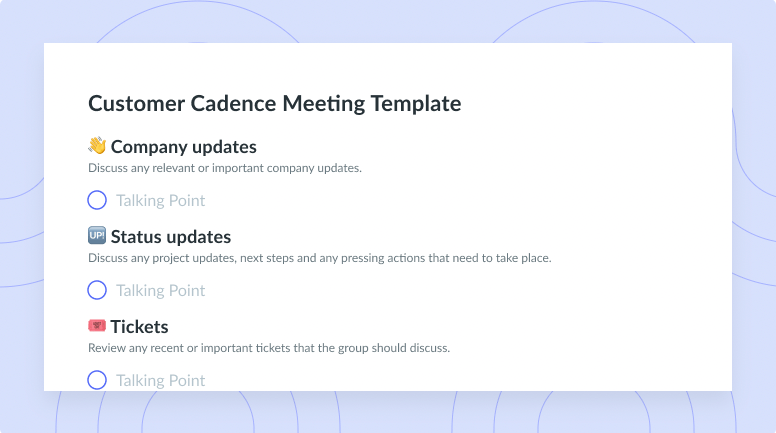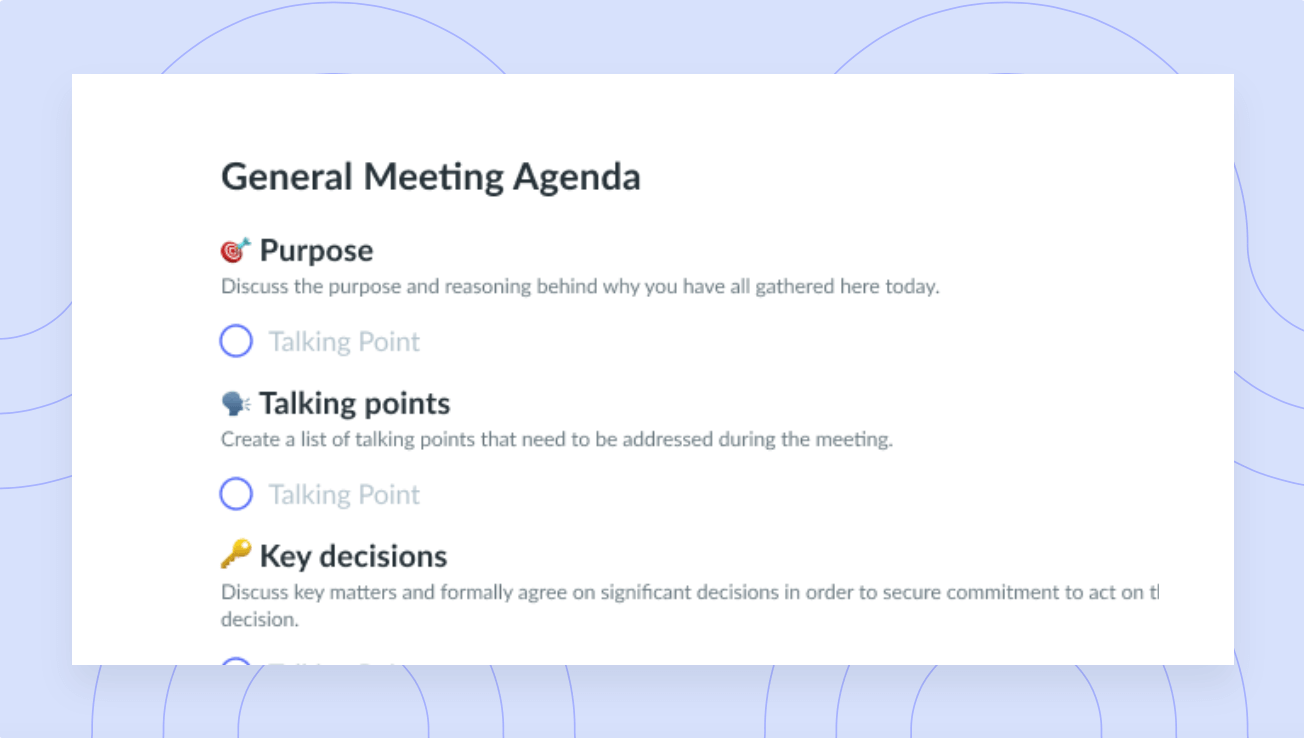How to Have Better Conversations at Work: 9 Tips
Having better conversations at work can help with productivity, retention, and employee engagement! See how.
Did you know that effective communication improves multiple workplace aspects such as productivity, engagement, and retention? With this comes a ton of benefits for higher team morale, reduced hiring or customer acquisition costs, and huge time savings, too. Here, we’ll dive deeper into the positive benefits of having better conversations at work, as well as how to start doing so in real life!
- The impact of having better conversations at work
- How to have better conversations at work
- How to use Fellow to have better conversations
The impact of having better conversations at work
- Improves team collaboration
- Increases productivity
- Reduces misunderstandings
- Creates better alignment
1Improves team collaboration
A lot of teams struggle when it comes to communicating on hard topics—such as why a campaign or project didn’t go as planned—which makes collaboration difficult as well. It also gets tricky when there are a lot of people involved and everyone has a different end goal in mind. Finding ways to improve team collaboration through better communication habits can help your team get to the root of the problem faster, and then get aligned on a solution.
2Increases productivity
Productive conversations allow all participants to leave with a mutual understanding and agreement on what should be done next. This decreases any time that is spent circling back, being confused, or starting to work on the project. Instead, team members will have a crystal clear idea of the expectations, plans, and goals so they can work more autonomously.
3Reduces misunderstandings
A lot of things cause misunderstanding in the workplace, including personality clashes, variations in cultural ideologies, or generational differences. Even a difference in seniority level can leave an employee with less information than is needed to do their job. Building better conversation practices helps ensure that everyone can get their points across and leave the meeting with a mutual understanding of the next steps.
4Creates better alignment
Team alignment is important for ensuring that employees are always working towards the same end goal. When your team is aligned, you’re able to meet deadlines faster—which has its own positive impacts like improved client relationships, faster product growth, and even getting more revenue in the door. Alignment also allows teams to problem solve faster as everyone agrees on why a certain solution is required.

Enable important conversations across the entire company
Collaborate on meeting agenda and action items to inspire productive conversations and include all voices with a tool like Fellow.

How to have better conversations at work
- Be concise
- Be specific
- Be intentional
- Ask follow-up questions
- Ask open-ended questions
- Encourage a balanced conversation
- Be an active listener
- Engage in nonverbal communication
- Prepare topics to discuss
Be concise
The shorter your points, the easier they are to remember. Sometimes, over-explaining points can make other people more confused and forget what the goal of the conversation was. Try to keep each sentence or question as short as possible. Not only does this help the person you’re speaking to understand the main point you’re trying to convey, but it also helps save time in your meeting. One way to try and do this in practice is to reflect on your conversation topic and think, “What does this ultimately mean?” in 10 words or less.
Be specific
Keep your focus on what you want to talk about. It’s easy for meeting topics to spiral into topics about unrelated projects or activities. Using a meeting agenda can help you mitigate this as it will act as a list of talking points that you need to cover within the conversation. You can also set time limits for each talking point to ensure you’re not derailing the conversation at any point. If you need more time to talk about a point or you need to discuss a separate item that’s not on the agenda, consider booking a second meeting.
Be intentional
Having a purpose for your meeting is essential. It ensures that you and the other people in your meeting agree that the conversation is valuable and will help you move toward a specific goal. To ensure that you have this alignment, make sure to put the purpose of the conversation in your meeting agenda. You can also be intentional by starting each conversation or individual talking point for the reason you want to talk about it. This will help the other person make sure they give you a relevant response.
Ask follow-up questions
Even if something seems clear, there may still be more information to learn about it. And often, having more information to build context, especially in problem-solving situations, is really helpful. As you get more context, you’ll be able to respond with more relevant solutions or get closer to identifying the root of the challenge. You can ask follow-up questions at the end of the meeting or throughout the meeting as the conversation goes along. Keep in mind that it’s best to agree with your conversation counterpart at the start of the call on how you want follow-up questions to be integrated.
Ask open-ended questions
If you’re looking to build a better understanding of what the other person is trying to explain to you, you need to ask open-ended questions. These are types of questions that don’t have a predetermined set of possible answers, so the respondent needs to provide a custom, often longer and more detailed answer. For example, “Why do you think this is occurring?”
The opposite is asking closed-ended questions which have limited response options. For example, “Is this occurring because of a budget issue?” In this closed-ended example, the respondent likely will only answer “yes” or “no” and has a choice to expand on their answer, but the question doesn’t encourage them to.
Encourage a balanced conversation
People benefit psychologically from learning from one another. An important part of doing so is spending some time asking about the other person. The most simple way to do this is by flipping the question back to them after you’ve answered. This is much like when someone asks how your weekend was, and you ask about theirs in return. You can take this a bit further by being curious about what this person is feeling about a given project, how they’ve handled certain challenges, or what their perspective is on your conversation topic. This helps keep the other person interested and engaged in the conversation, too!
Be an active listener
Active listening is the most engaged level of the five levels of listening that leaders need to understand to have better conversations with their employees. In short, practicing active listening is a way to show other team members that you’re paying attention and it will help you absorb the conversation better, too. There are simple ways to start practicing active listening right away, such as nodding along, asking follow-up questions, and avoiding distractions during the conversation.
Engage in nonverbal communication
More context and information can be conveyed through body language than verbal communication. Yet, remote working teams don’t get as much face-to-face time with their colleagues so it can be more challenging to convey nonverbal communication. Some ways to do this effectively include:
- Keeping your camera on to show your engagement
- Leveraging reactions in video conferencing software
- Using hand gestures that are appropriate to the situation (like a thumbs up to confirm you’ve heard something correctly)
Prepare topics to discuss
Coming to the conversation prepared is a huge sign of respect for the person with whom you’re meeting. Right away, it proves that you understand they’ve taken time out of their day to have a conversation with you and you’re prepared to jump right into business. If you have any reports, charts, or images that need approval in the conversation, you’ll want to bring those with you, too. This will make the most out of your time together as you’ll be less likely to get sidetracked and more likely to get answers to any questions you have.
How to use Fellow to have better conversations
Fellow is a virtual meeting management software that teams can use to have better conversations—regardless of what kind of working environment they have! You can leverage features such as the collaborative meeting agenda tool to ensure that everyone in your conversation can contribute talking points ahead of time. Fellow also has integrations with video conferencing tools, like Google Meet, so you can seamlessly view the agenda and collect meeting notes all from within your call window, making active listening much easier. Your collaborative agenda and notes are shared across the team in real time, which ensures that everyone is in alignment. Then, you can put your conversation into action by assigning action items to specific team members, including due dates to hold team members accountable.
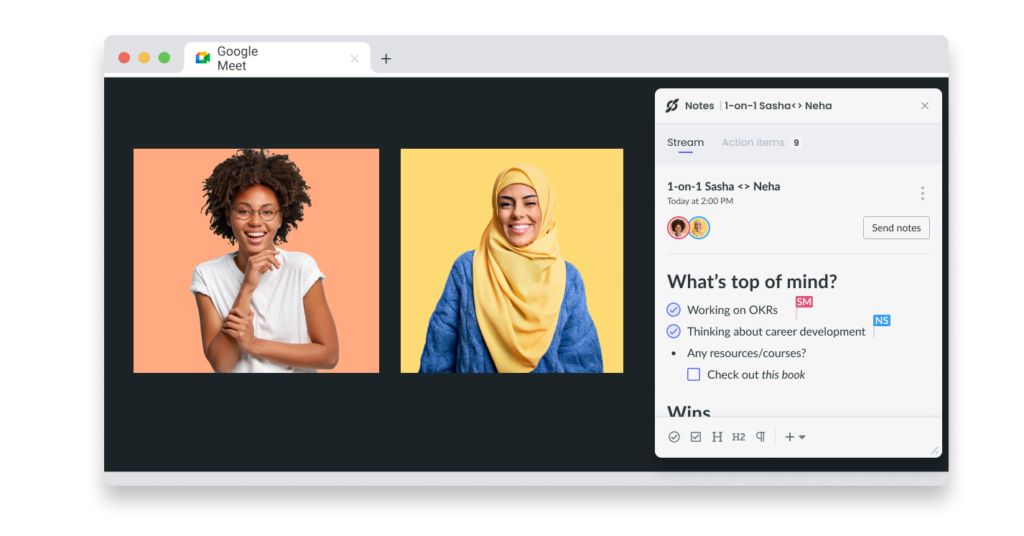
Parting advice
There are endless benefits to having better conversations at work. Not only can you improve operational metrics such as how long it takes to complete a project, but you can also improve employee morale, retention rates, and team alignment! Being prepared for your conversation and actively engaging with the other people in your conversation can help you make the most out of your time together. If you’re looking to have better conversations right away, you can get started with Fellow’s free plan to make prepping and tracking discussions much easier.









